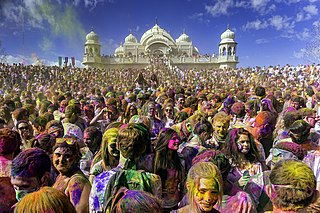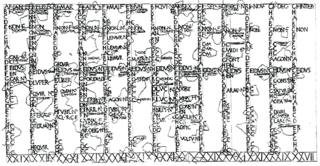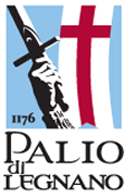
Asti is a comune (municipality) of 74,348 inhabitants (1–1–2021) located in the Italian region of Piedmont, about 55 kilometres east of Turin, in the plain of the Tanaro River. It is the capital of the province of Asti and it is deemed to be the modern capital of Montferrat.

A religious festival is a time of special importance marked by adherents to that religion. Religious festivals are commonly celebrated on recurring cycles in a calendar year or lunar calendar. The science of religious rites and festivals is known as heortology.

Tourism in Italy is one of the largest economic sectors of the country. With 65 million tourists per year (2019) according to ISTAT, Italy is the fifth most visited country in international tourism arrivals. According to 2018 estimates by the Bank of Italy, the tourism sector directly generates more than five per cent of the national GDP and represents over six per cent of the employed.

Sextilis or mensis Sextilis was the Latin name for what was originally the sixth month in the Roman calendar, when March was the first of ten months in the year. After the calendar reform that produced a twelve-month year, Sextilis became the eighth month, but retained its name. It was renamed Augustus (August) in 8 BC in honor of the first Roman emperor, Augustus. Sextilis followed Quinctilis, which was renamed Julius (July) after Julius Caesar, and preceded September, which was originally the seventh month.

Festivals in ancient Rome were a very important part in Roman religious life during both the Republican and Imperial eras, and one of the primary features of the Roman calendar. Feriae were either public (publicae) or private (privatae). State holidays were celebrated by the Roman people and received public funding. Games (ludi), such as the Ludi Apollinares, were not technically feriae, but the days on which they were celebrated were dies festi, holidays in the modern sense of days off work. Although feriae were paid for by the state, ludi were often funded by wealthy individuals. Feriae privatae were holidays celebrated in honor of private individuals or by families. This article deals only with public holidays, including rites celebrated by the state priests of Rome at temples, as well as celebrations by neighborhoods, families, and friends held simultaneously throughout Rome.

Public holidays in Italy are established by the Italian parliament and, with the exception of city or community patronal days, apply nationwide. These include a mix of national, religious and local observances. As for Whit Monday, there is an exception for South Tyrol. In Italy there are also State commemoration days, which are not public holidays.

The Palio di Siena is a horse race held twice each year, on 2 July and 16 August, in Siena, Italy. Ten horses and riders, bareback and dressed in the appropriate colours, represent ten of the seventeen contrade, or city wards, in a tradition dating back to the 17th-century. The Palio held on 2 July is named Palio di Provenzano, in honour of the Madonna of Provenzano, a Marian devotion particular to Siena which developed around an icon from the Terzo Camollia area of the city. The Palio held on 16 August is named Palio dell'Assunta, in honour of the Assumption of Mary.

Velletri is an Italian comune in the Metropolitan City of Rome, approximately 40 km to the southeast of the city centre, located in the Alban Hills, in the region of Lazio, central Italy. Neighbouring communes are Rocca di Papa, Lariano, Cisterna di Latina, Artena, Aprilia, Nemi, Genzano di Roma, and Lanuvio. Its motto is: Est mihi libertas papalis et imperialis.

The Temple of Augustus and Rome is an augusteum located in the Altındağ district of Ankara. It is thought to have been built around 25–20 AD. Besides being one of the most important Roman-period ruins in the city, it is also known for the Monumentum Ancyranum. This is an inscription about the works of Augustus, who was considered the first Roman emperor. It is the most complete copy of Res Gestae Divi Augusti that has survived to the present day, even as the original in Rome had disappeared.

The Mausoleum of Augustus is a large tomb built by the Roman Emperor Augustus in 28 BC on the Campus Martius in Rome, Italy. The mausoleum is located on the Piazza Augusto Imperatore, near the corner with Via di Ripetta as it runs along the Tiber. The grounds cover an area equivalent to a few city blocks nestled between the church of San Carlo al Corso and the Museum of the Ara Pacis. After being closed for fourteen years to perform restoration work, the mausoleum was reopened to the public in March 2021.

Ianuarius, Januarius, or January, fully Mensis Ianuarius and abbreviated Ian., was the first month of the ancient Roman calendar, from which the Julian and Gregorian month of January derived. It was followed by Februarius ("February"). In the calendars of the Roman Republic, Ianuarius had 29 days. Two days were added when the calendar was reformed under Julius Caesar in 45 BCE.

Irsina, until 1895 called Montepeloso, is a town, comune (municipality) and former Latin bishopric in the province of Matera, in the Southern Italian region of Basilicata. It is one of I Borghi più belli d'Italia.

Latium is the region of central western Italy in which the city of Rome was founded and grew to be the capital city of the Roman Empire.

Maius or mensis Maius (May) was the third month of the ancient Roman calendar, following Aprilis (April) and preceding Iunius (June). On the oldest Roman calendar that had begun with March, it was the third of ten months in the year. May had 31 days.

The Solarium Augusti or Horologium Augusti was a monument in the Campus Martius of ancient Rome constructed in 10 BCE under the Roman emperor Augustus. It included an Egyptian obelisk that had first been erected under the pharaoh Psamtik II used in some fashion as a gnomon. Once believed to have been a massive sundial, it is now more commonly understood to have been used with a meridian line used to track the solar year. It served as a monument of Augustus having brought Egypt under Roman rule and was also connected with the Altar of Augustan Peace commemorating the Pax Romana established by his ending the numerous civil wars that ended the Roman Republic. The Solarium was destroyed at some point during the Middle Ages. Its recovered obelisk is now known as the Obelisk of Montecitorio.
Fascist mysticism was a current of political and religious thought in Fascist Italy, based on Fideism, a belief that faith existed without reason, and that Fascism should be based on a mythology and spiritual mysticism. A School of Fascist Mysticism was founded in Milan on April 10, 1930. Active until 1943, its main objective was the training of future Fascist leaders who were indoctrinated in the study of various Fascist intellectuals who tried to abandon the purely political to create a spiritual understanding of Fascism. Fascist mysticism in Italy developed through the work of Niccolò Giani with the decisive support of Arnaldo Mussolini.

The Palio di Parma is a festival that is held once a year in the northern Italian town of Parma, and traces back to the ancient "Scarlet Run". The Palio is normally hold on the third weekend of September.

Traditions of Italy are sets of traditions, beliefs, values, and customs that belongs within the culture of Italian people. These traditions have influenced life in Italy for centuries, and are still practiced in modern times. Italian traditions are directly connected to Italy's ancestors, which says even more about Italian history.

The Palio di Legnano is a traditional event generally held on the last Sunday of May in the City of Legnano, Italy, to recall the Battle of Legnano held on 29 May 1176 by the Lombard League and the Holy Roman Empire of Frederick Barbarossa. This Palio is composed by a medieval pageant and a horse race. Until 2005 the whole event was named Sagra del Carroccio.

The contrade of Legnano are the eight historical subdivisions into which the city of Legnano, in Lombardy, in Italy, is divided. They participate annually in the Palio di Legnano.



















